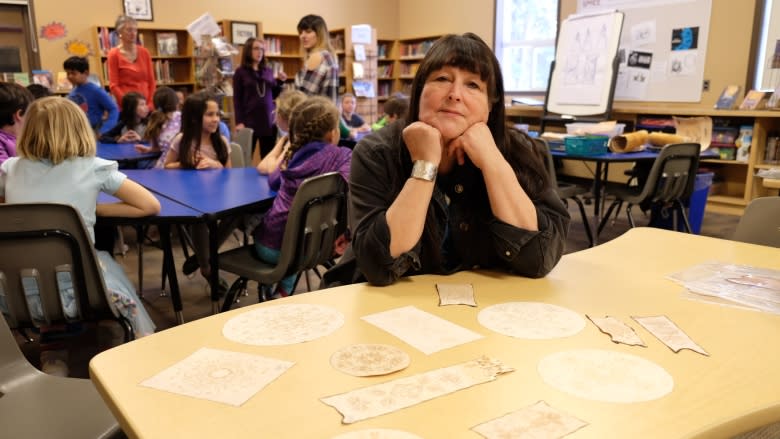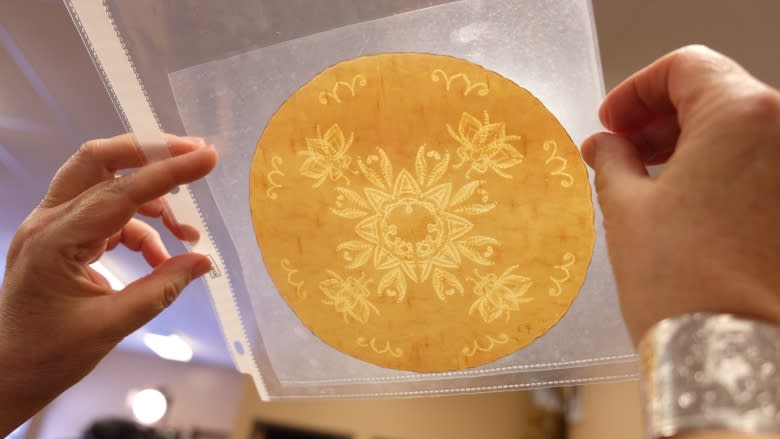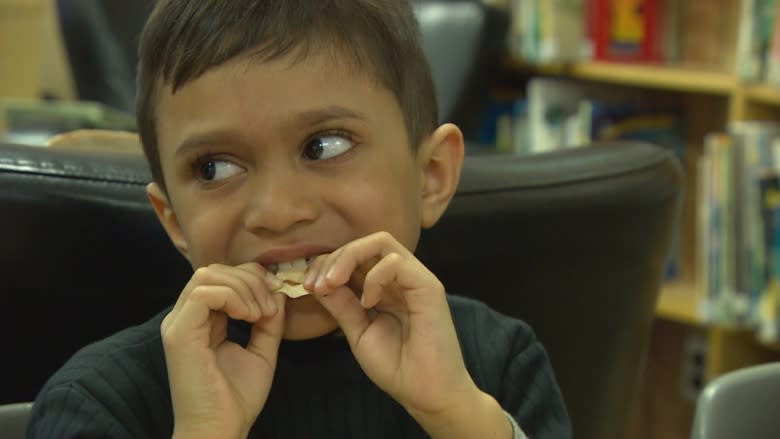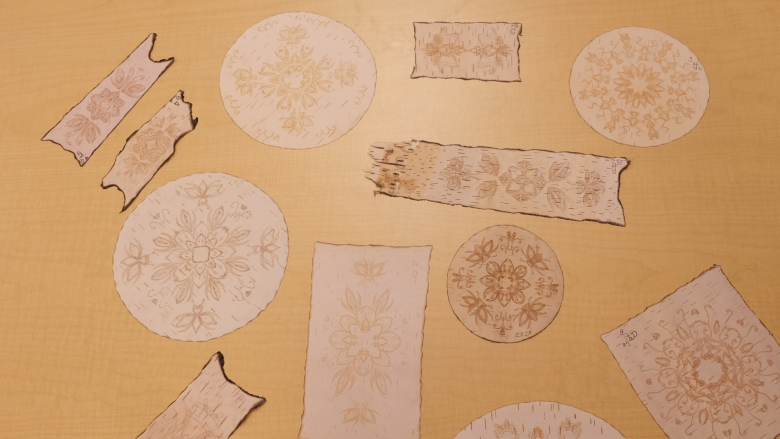Biting into tradition: Elementary school students learn Cree art of birch bark biting
Students at Winnipeg's Oakenwald School literally sank their teeth into learning about Indigenous tradition this week, as Cree artist Pat Bruderer spent three days showing kindergarten to Grade 6 classes the rare art form of birch bark biting.
"This is thousands of years old, this art form, and it was done to record our ceremonies and our stories and our beadwork patterns," said Bruderer.
After harvesting the birch bark herself, Bruderer takes a thin strip and folds it several times. She uses her teeth to create tiny impressions in the bark. Once unfolded, a symmetrical design is revealed.
The self-taught artist had her first encounter with birch bark biting nearly 30 years ago when she saw the work of Angelique Merasty, another Manitoba birch bark biter. She became curious and eventually found herself sifting through a neighbour's woodpile looking for her canvas.
"I started to practise, I started to get better and better at it, and my goal was to teach as many children as I could, because I always wanted other children and my children to always know what it was," the mother of five said.
Born in Churchill, Man., and believed to be one of only a few birch bark biters in North America, Bruderer's work is displayed in galleries and museums around the world. She's made a living from her art, but also makes a point of passing on her knowledge.
"I want other children besides my own to know what this is and that it never becomes a lost art," said Bruderer, whose traditional name is Half Moon Woman.
"So many of our traditions, and so much of our culture, was lost because of residential schools and colonization that it's really important to pass these traditions on."
The Cree artist says birch bark has been used by Indigenous peoples to build canoes, harvest birch water, and to wrap both babies and the dead.
An art form normally practised by women, birch bark biting dates back centuries in Indigenous communities across Canada.
Oakenwald principal Tanis Thiessen has been trying to secure a session with Bruderer since she first learned about her work four years ago.
"It's amazing how we've been able to have her for three full days, when there's literally only a handful of people in the world who can pass on this knowledge," said Thiessen.
Multidisciplinary art
All of the nearly 200 students at the Crescent Park-area school got the chance to learn about the tradition and try it for themselves.
"They're hesitant at first, they're looking at it and saying, 'I bite this?' and they're wondering how it's going to taste," said Thiessen.
She said each age group and student takes something different from the lesson because the art form covers a lot of ground.
"It's bringing in math and science and language arts, because of all the storytelling and the culture that she's got surrounding all of it," she said.
Bruderer says the earlier children learn the skill, the better they become at more contemporary subjects.
"The sooner you know how to do birch bark biting, the better you'll do in math and science and architecture."
Bruderer says bark biting encourages students to use spatial reasoning, and to use their imaginations as they think about what they want to create.
"It's really neat to see the kids that have little or no confidence … be able to create a piece, because when they open it their whole face just lights up."
She says the bark also has medicinal properties in its light powdery coating, and the practice of biting can be therapeutic.
"It takes your mind off everything. You can't think about anything except for what you are creating, so any problems you have or whatever just goes away, so it is very healing for people," said Bruderer.
"Birch bark bitings are like people — they're beautiful and there's no two the same."







